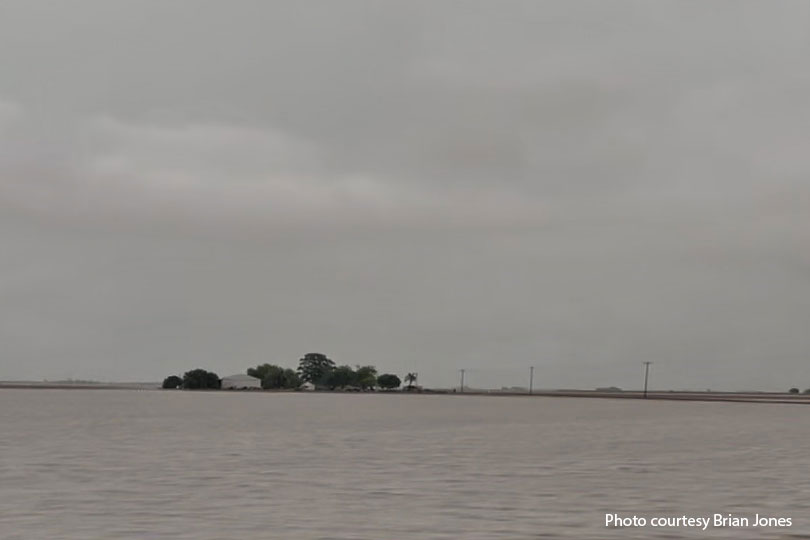By Julie Tomascik
Editor
Relentless rain pummeled the Rio Grande Valley late last week, leaving thousands of acres of farmland underwater and causing widespread damage to homes, businesses, rural infrastructure and crops.
Farmers in the region are bracing for significant crop losses.
Brady Taubert, a corn, grain sorghum, and cotton farmer in Rio Hondo, said the flooding is unlike anything he has experienced in his farming career.
“A friend sent me a video of someone using a bay boat to rescue people from their homes on a paved county road. If they’re doing that, I knew the farmland looked like lakes,” said Taubert, who is also president of Cameron County Farm Bureau.
The storm, which began early on March 27 and continued into March 28, brought record-breaking rainfall. Reports indicate totals ranged from 10 to 15 inches in many locations, with some areas receiving up to 20 inches. Still others received over 20.
It was a year’s worth of rain in 24 hours.
Crops were in various stages of growth when the floodwaters swept through.
Corn had been growing well and was already knee-high in some areas. Sorghum ranged from newly emerging plants to those about six to eight inches tall. Cotton, the most vulnerable of the three crops, had just been planted.
“Cotton won’t tolerate any standing water,” Taubert said. “The chances of severe damage or total loss are very high.”
The impact stretches beyond farmland.
Many towns in the region suffered devastating flooding, leaving homes and businesses under several feet of water.
“My little hometown (Rio Hondo) is catastrophic,” Taubert said. “Many homes and businesses flooded. The Arroyo Colorado is at its highest level ever—close to 30 feet. Boats floated out of their slips, some even crashing through the roofs of boathouses.”
Emergency crews conducted numerous high-water rescues, and ranchers worked fast to move cattle to higher ground as pastures disappeared beneath floodwaters.
It could be a week or more before fields and pastures dry out enough for farmers to fully assess the damage.
Taubert said he and others will be working with insurance agents in the coming days, but the financial toll could be severe, especially for those without flood insurance.
“I’ve been through two hurricanes, but I’ve never seen this much rain when a crop was just getting started,” he said. “It’s gut-wrenching.”
Replanting options are limited. By the time fields dry out, it will be too late to plant corn or cotton. However, some farmers may opt to plant sorghum or sesame, which has a later planting deadline of mid-May.
For now, Taubert and other Valley farmers are left waiting, hoping and praying.


Leave A Comment